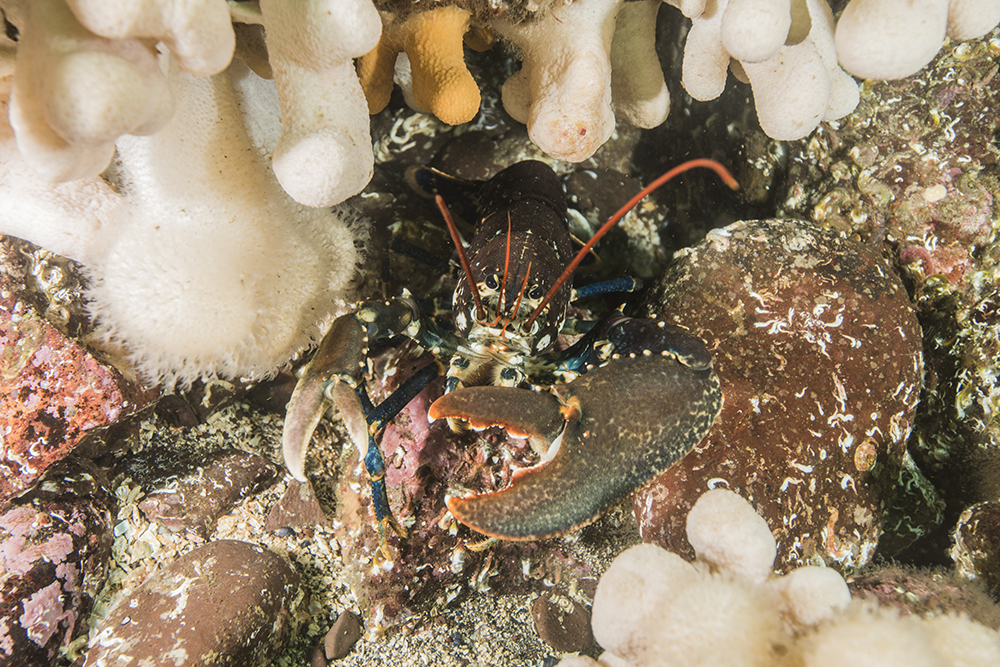 Travelling worldwide gives me the opportunity to photograph and enjoy a huge amount of reef life, from sharks to nudibranchs. The one constant though, is that many of my fellow divers don’t think there’s anything worth seeing in UK waters. They couldn’t be more wrong!“It’s cold and there’s nothing to see’ is a commonly heard phrase when chatting with my fellow Brits about diving off the UK coast. For them, it seems, diving is a warm water activity and reefs are a tropical feature only.
Travelling worldwide gives me the opportunity to photograph and enjoy a huge amount of reef life, from sharks to nudibranchs. The one constant though, is that many of my fellow divers don’t think there’s anything worth seeing in UK waters. They couldn’t be more wrong!“It’s cold and there’s nothing to see’ is a commonly heard phrase when chatting with my fellow Brits about diving off the UK coast. For them, it seems, diving is a warm water activity and reefs are a tropical feature only.
So while the reefs off the coast of the UK, and in this case southeastern Scotland, might be a little less colorful than Tubbataha or Raja Ampat, and, admittedly, might have slightly murkier water than pretty much anywhere, there is still plenty to see. Here are a few favorite animals I photographed over the weekend.
Take corals for example. We might not have many species, but we have an awful lot of individual colonies. In the shot above you can see a ship’s propeller covered in Alcyonium digitatum aka Dead Mens Fingers. This is a common azooxanthellate species found all around the UK coast, seen here at around thirty meters.
Amongst the rubbery A. digitatum, various crab and other crustacean species are very common. These shots show the attractive Velvet Swimming Crab (Necora puber), which can be present in huge numbers on some sites; every few meters, you can find another one of these red-eyed fellows.
Easily confused with the Dead Mens Fingers are certain anemone species. While we don’t have many widespread anemone species in UK waters, we more than make up for it in sheer numbers. These Plumose Anemones are a particular favorite of mine.
Its often a surprise to warm water divers that the seemingly tough conditions of UK waters can host delicate species like this Featherstar.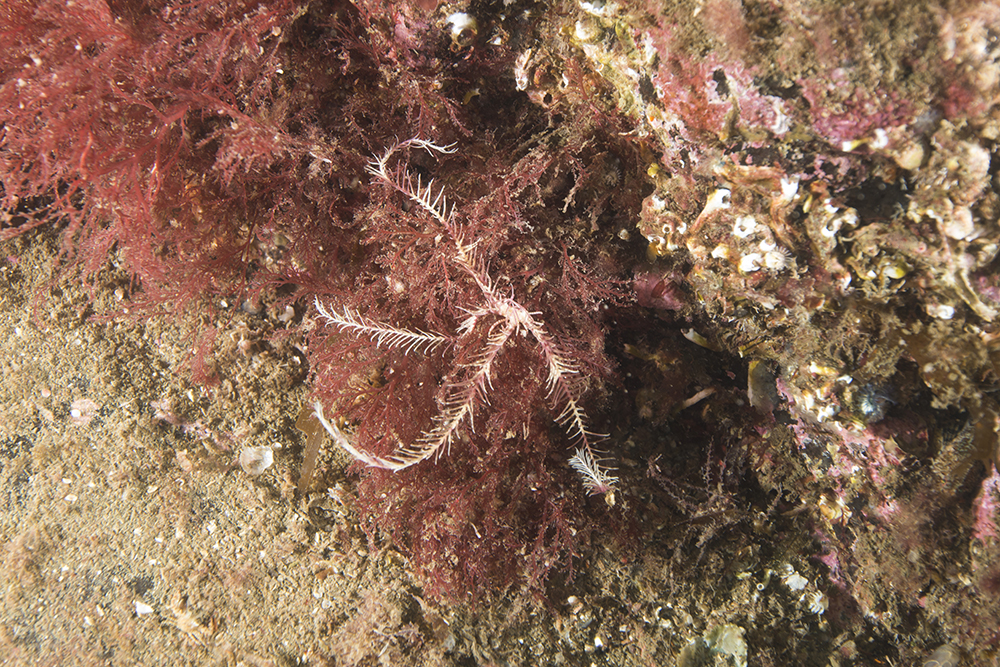
I’m not sure which species this is, though it could be Leptometra celtica, given its delicate appearance. The most commonly seen species is Antedon bifida.

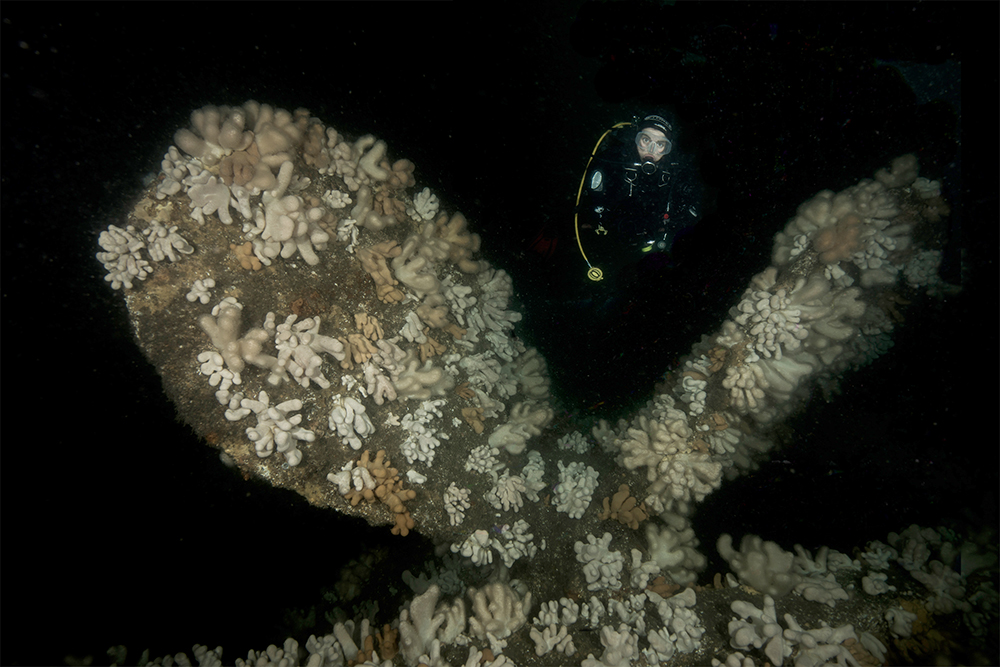
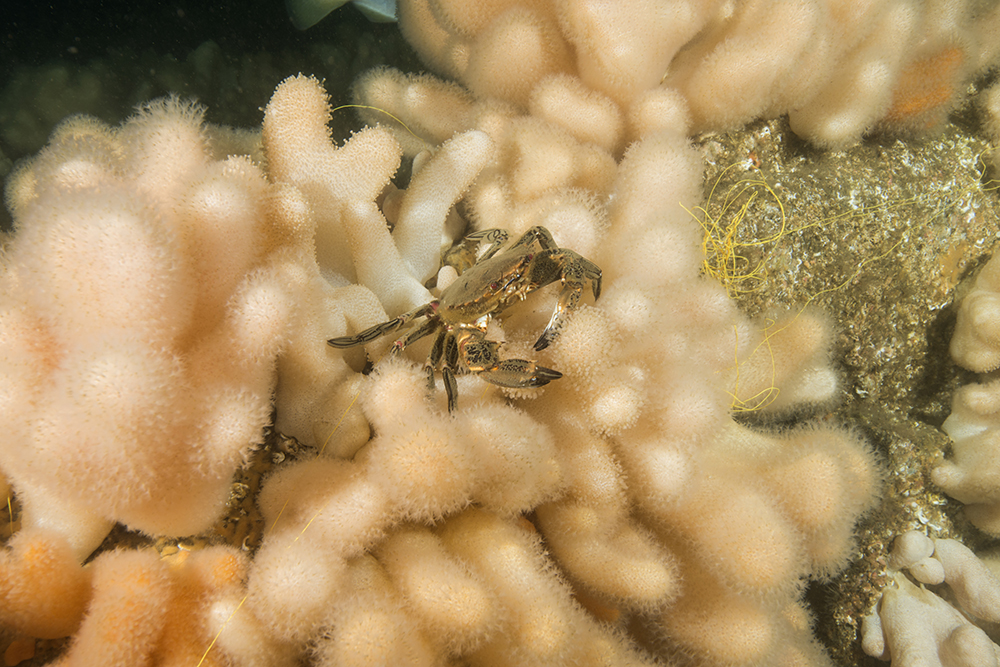
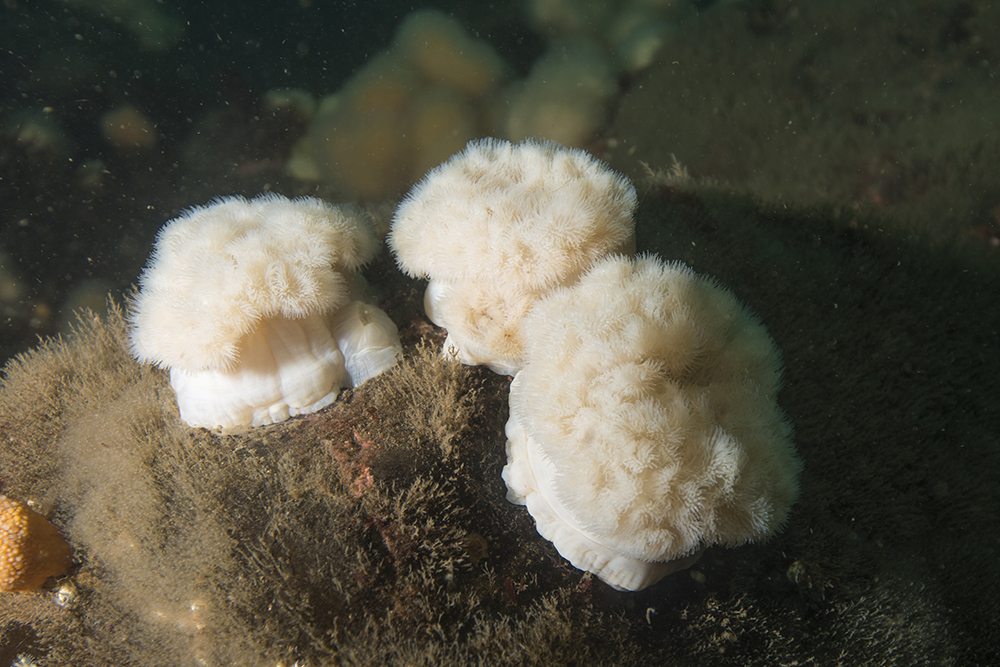








0 Comments